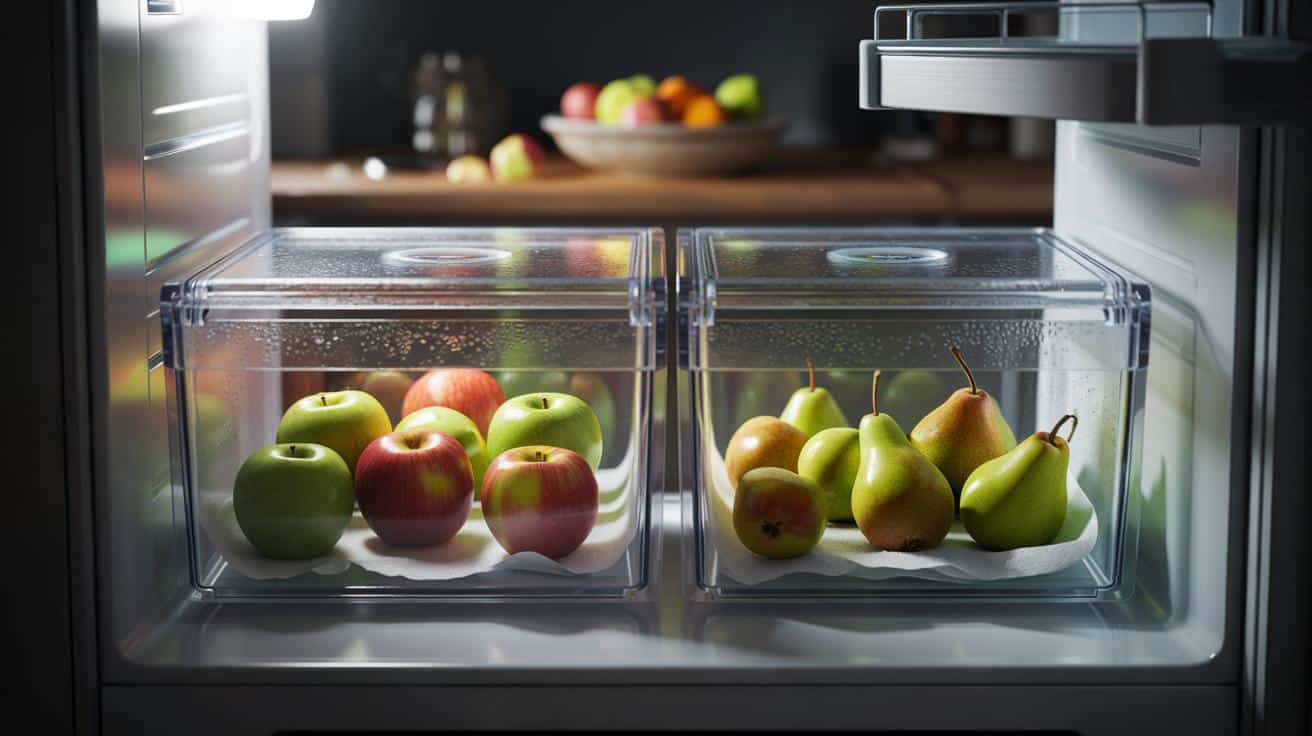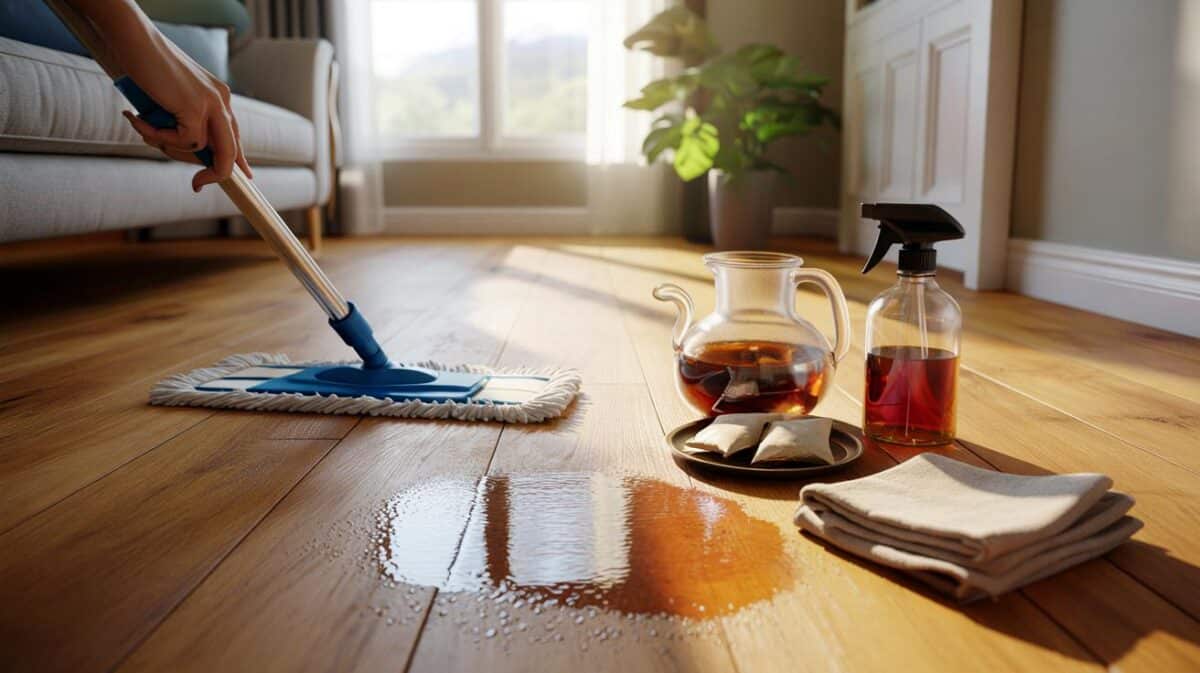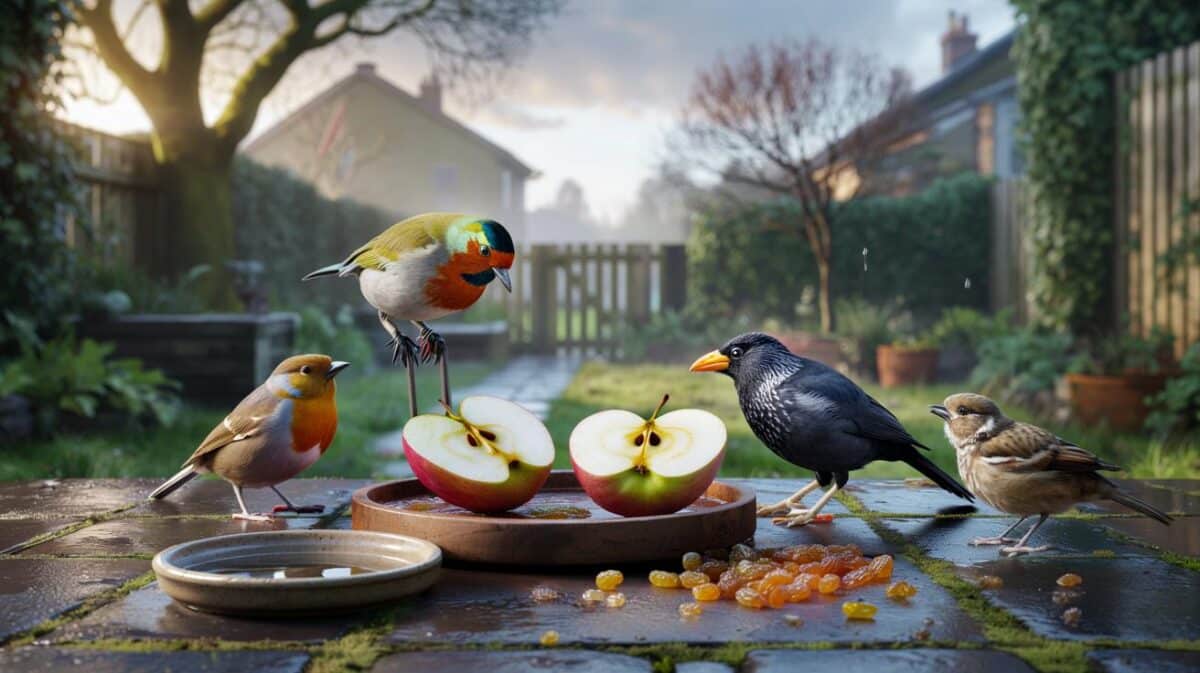Three days later, one bruise spreads like tea in water, then a second, and by the weekend you’re slicing away soft spots and feeling faintly cross. Fruit turns fast when life turns busy. The trick you’re missing is small, almost laughably so, and it’s sitting in your kitchen already.
I stood in my friend Lena’s tiny London kitchen watching her unpack the market haul. Apples went into a shallow plastic box, a sheet of kitchen paper underneath, another on top, lid clicked on, then straight into the fridge. Pears got the same treatment, but in a separate box. She did it in under a minute, like tying her shoelaces. “It doubles the time,” she said, flicking the fridge drawer shut. I didn’t believe her. The next week, I did. A simple move, quietly brilliant.
Why your fruit seems to spoil overnight
Apples and pears are climacteric fruits, which is a fancy way of saying they ripen after picking. They breathe, they sweat, they release a ripening gas called ethylene. Left in a bowl, they sit in their own breath and soften quicker than you’d like. Fridges slow that breath, yet cold air dries things out and condensation invites mould. It’s no wonder you ping-pong between mealy and mushy. The bowl looks pretty, sure. The bin looks busier.
We’ve all had that moment when you promise to bake a crumble, then find the apples have gone floury and the pears look like little accordions. Multiply that across a household and it adds up. UK waste campaigners have long listed apples among the most commonly binned fruits at home, a quiet leak of money and effort. I once counted five rejects in a fortnight, which felt both silly and oddly sad. It didn’t need to go that way.
Here’s the simple logic. Cold slows ripening, so the fridge helps. High humidity keeps fruit plump, but excess surface moisture is trouble, as water trapped against the skin speeds decay. Ethylene is the invisible accelerator, and apples and pears each produce enough of it to push their neighbours along. Pair those facts and the shape of an answer appears: give fruit a cold, slightly humid microclimate, wick away condensation, and keep apples away from pears. That’s the science in three tidy steps.
The paper-towel-in-a-box method
Line a shallow, lidded container with a clean, dry sheet of kitchen paper. Lay your apples in a single layer. Add a second sheet on top, pop on the lid, and slide the box into the fridge drawer. Do pears the same way, but in a separate box. That’s it. The paper catches condensation, the lid holds gentle humidity, the fridge slows time, and the separation keeps ethylene from stacking up between the two fruits. You swap the top paper when it feels damp. Two minutes, tops.
A couple of small tweaks make it sing. Use a box that lets fruit sit snug, not rattling; bruises are tiny time-bombs. If you only have bags, a reusable zip bag works in a pinch—add the paper towel and keep it slightly puffed with air so it’s not a vacuum. Store the boxes in the crisper set towards high humidity. Keep one “ready now” pear at room temperature if you like them soft. Let’s be honest: nobody does that every day. So batch it after your shop, then forget about it.
There’s a reason this cheap little habit works across kitchens and seasons. Ethylene moves faster in warm air, mould loves stagnant moisture, and bruises spread chemistry like gossip. The box-and-towel combo breaks that chain with almost no thought.
“Cold slows, paper wicks, a lid holds. And apples and pears? Keep them as friendly neighbours, not flatmates,” says Tom, a greengrocer who’s sold fruit on Brixton’s Electric Avenue for twenty years.
For quick reference, here’s a tiny checklist you can screenshot:
- Box + dry paper towel under and over the fruit
- Fridge drawer set towards high humidity
- Apples and pears stored separately
- Swap damp paper weekly or when wet
- Keep a couple at room temp only if you’ll eat them within 48 hours
Little routines, less waste, nicer fruit
I started doing this on a rainy Thursday, thinking it was a faff, and realised it felt almost soothing. A small domestic line drawn against waste. The apples kept their snap for nearly three weeks, the pears stayed poised at that brief perfect stage instead of tipping into sandiness. The best part is the lack of drama. No new gadget, no special sachets, no guilt. Just a box, a towel, and a fresher bowl when you do want something on show. *Tiny rituals change how a kitchen feels.*
| Key points | Detail | Interest for the reader |
|---|---|---|
| Use a lidded box with paper towels | One sheet under and one over the fruit to catch moisture | Reduces mould and bruising without buying new gear |
| Chill in the crisper on high humidity | Cold slows ripening; humidity keeps fruit plump | Apples and pears stay crisp up to twice as long |
| Keep apples and pears apart | Both produce ethylene that speeds ripening in the other | More control over ripeness and less waste |
FAQ :
- Should I wash apples and pears before storing them?Skip the full wash first. A light wipe is fine, then wash just before eating. Extra moisture on the skin can speed decay in storage.
- Do perforated bags work as well as a box?They can. Add a dry paper towel and don’t overfill. A box is sturdier against bruises, but a bag with a bit of trapped air keeps humidity nicely.
- Can I store apples with other produce?Keep them away from leafy greens and berries. Apples give off ethylene that pushes delicate veg past their best faster.
- How do I ripen pears on purpose?Leave a pear at room temperature in a fruit bowl. If you’re in a hurry, place it near an apple in the bowl; their natural gas will help it along.
- What if my apples have gone a little soft?Cook them. Soft apples bake beautifully into crisps, crumbles, or a quick pan of cinnamon apples. Still delicious, just a different route.









